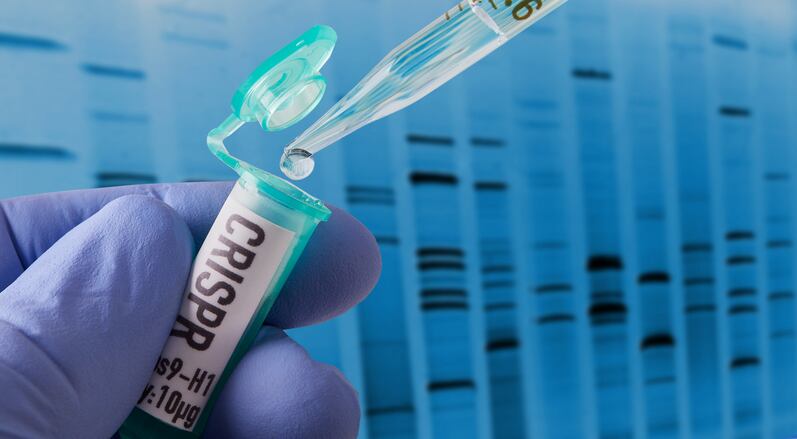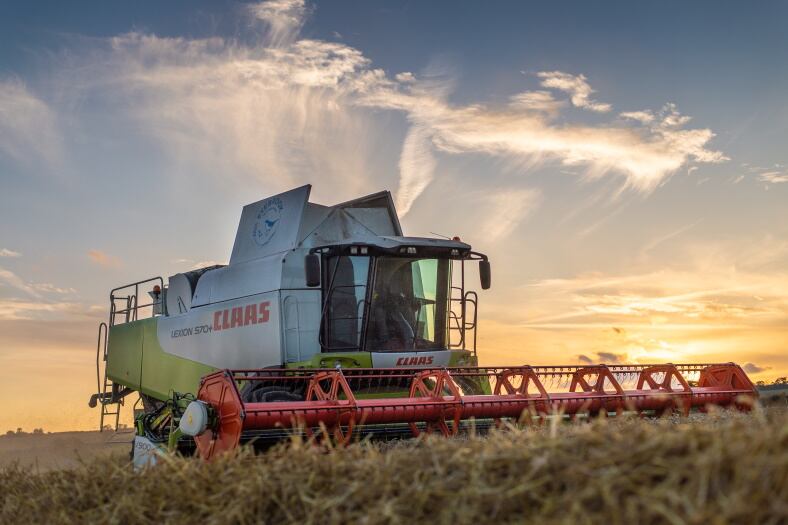CRISPR – or gene editing technology – represents an exciting development for the food industry, but regulation has limited the use of the technology in agriculture.
Both gene editing and genetic modification are banned by the EU, although Brussels is reviewing its stance on CRISPR crops. The UK is consulting on whether to use post-Brexit freedoms to break with EU rules and permit production of food from gene edited animals and crops.
CRISPR can be used as an advanced plant-breeding tool that facilitates crop breeding by making cuts at specific locations in a plant genome. Subsequent repair of the cut by the cell’s endogenous repair mechanism can introduce precise changes.
The UK Department for Environment, Food and Rural Affairs believes gene editing techniques, such as CRISPR, have the potential to produce abundant, healthy food and to reduce the environmental impact of a growing global population.
If further believes gene editing techniques, when used to breed crops that could have been developed using traditional methods, should not be regulated as GM crops. It complains that despite the differences between genome editing with CRISPR and GM, genome edited plants are currently treated in the same way as GM under EU regulations, essentially blocking the use of a technology that is gaining official approval in many other parts of the world.
Using gene editing techniques to make healthier toast
UK research institute Rothamsted Research, a pioneer of GM crop trials since the 1990s, has now been granted government permission to run a series of field trials of wheat that has been genome edited in an effort to make healthier bread with lower levels of asparagine, which can be converted to the potentially cancer-causing chemical acrylamide when bread is baked.
The experiments will be the first field trials of CRISPR edited wheat anywhere in the UK or Europe.
The wheat has been edited to reduce levels of the naturally occurring amino acid, asparagine, which is converted to the carcinogenic processing contaminant, acrylamide, when bread is baked or toasted. The gene-edited wheat plants are being grown outside to test whether the edits have the desired effect under field conditions.
The ultimate aim of the project is to produce ultra-low asparagine, non-GM wheat, according to project leader Professor Nigel Halford.
“Acrylamide has been a very serious problem for food manufacturers since being discovered in food in 2002,” he said. “It causes cancer in rodents and is considered ‘probably carcinogenic’ for humans. It occurs in bread and increases substantially when the bread is toasted, but is also present in other wheat products and many crop-derived foods that are fried, baked, roasted or toasted, including crisps and other snacks, chips, roast potatoes and coffee.”
Halford’s team believes that asparagine levels can be reduced substantially in wheat without compromising grain quality. This would benefit consumers by reducing their exposure to acrylamide from their diet, and food businesses by enabling them to comply with regulations on the presence of acrylamide in their products.
“That is a long-term goal, however, and this project aims to assess the performance of the wheat plants in the field and measure the concentration of asparagine in the grain produced under field conditions,” added Halford.
‘Knocking out’ the asparagine gene
During development in the lab, researchers ‘knocked out’ the asparagine synthetase gene, TaASN2.
Asparagine concentrations in the grain of the edited plants were substantially reduced compared with un-edited plants, with one line showing a more than 90% reduction, according to project scientist Dr Sarah Raffan.
“This new trial will now measure the amount of asparagine in the grain of the same wheat when grown in the field, and assess other aspects of the wheat’s performance, such as yield and protein content,” she said.
The plan is for a project of up to five years, ending in 2026, with plants being sown in September/October each year and harvested the following September. Funding is in place for the first year, and additional support is being sought for the subsequent years.
The edited plants will be grown alongside wheat in which asparagine synthesis has been affected using the ‘old-fashioned’ method of chemically-induced mutation.
This technique has been widely used in plant breeding since the mid-20th century but is not targetable in the way that CRISPR is and results in random mutations throughout the genome.
In contrast, CRISPR makes small changes to a target gene, in this case to knock that gene out so that a functional protein is no longer made from it. The process initially involves genetic modification to introduce genes required for the CRISPR process into the plant.
Once the edit has been made the GM part can be removed from the plants by conventional plant breeding methods over a few generations. The greater numbers of plants that can be grown in the field will speed up that process, said Halford.
“The larger number of plants we can have in the field trial compared with a glasshouse will make it easier to identify plants that are no longer GM. This means that the first year of the trial will have plants that are both GE and GM but by the third year of the trial we expect them to be GE only.”
Breeding healthier and more sustainable crops?
The leaders hope the project will lead to new legislation in the UK, allowing genome edited food products, carefully regulated, to be available to consumers.
They claimed news of this new trial will likely be welcomed by the food industry, where acrylamide is classed as a processing contaminant which requires close monitoring under EU law.
Halford said: “Current regulations on acrylamide include ‘benchmark levels’ for its concentration in different food types and require food businesses to monitor their products for its presence. It looks likely that these regulations will be strengthened, with the EU moving towards the introduction of maximum levels above which it would be illegal to sell a food product. Other regulatory authorities are likely to follow suit.”
A Defra spokesperson said of the project: “Gene editing has the ability to harness the genetic resources that mother nature has provided, such as breeding crops that perform better, benefitting farmers and reducing impacts on the environment.
“Now that we have left the EU, we have the opportunity to make coherent policy decisions on gene editing based on current science and evidence. We are committed to proportionate, science-based regulation that protects people, animals and the environment.”



